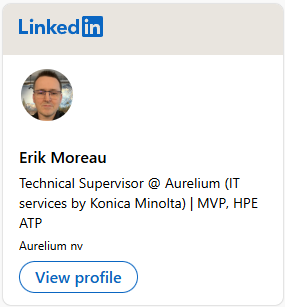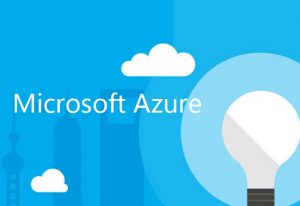Welcome to Ask PFE Plat’s coverage of the next chapter in Microsoft’s on-going refinement of Windows. As with 8.1, we continue to evolve and improve the OS and last week, at the Build 2014 conference, we released “Windows 8.1 Update” to MSDN. On Tuesday, April 8th, the Update will be released to the Windows Update Catalog, Windows Update and WSUS channels.
Our prior post on the “dot 1” update to Windows 8 RTM from October of last year sparked great conversation – in fact, it was our most-commented post; we (PFEs and Microsoft as a whole) appreciate the feedback and discussion. Several of us have been chomping at the bit to bring you details of the changes coming with this Update. This is a “roundtable post” with discussion from myself (Michael Hildebrand), Jeff “The Dude” Stokes, Kyle Blagg, Mark Morowczynski and who can talk about Windows 8 without talking to Joao Botto?
Let’s roll…
The Update, as we’ll call it here, is actually a series of packages that install collectively and provide UI and functionality improvements (many geared towards keyboard/mouse users), a big IE feature-add as well as some heavy-lifting internal changes to Windows boot structures and memory/resource awareness and management. For additional information, check out the following:
- http://blogs.windows.com/windows/b/windowsexperience/archive/2014/04/02/windows-8-1-update-important-refinements-to-the-windows-experience.aspx
- http://blogs.windows.com/windows/b/springboard/archive/2013/10/18/windows-8-1-update-the-it-pro-perspective.aspx
This post will focus mostly on the UI changes – there may be future AskPFE Platforms posts that dive into some of the other aspects of the Update.
Before we get ahead of ourselves, let’s cover a few heads-up/FAQ comments:
-
It will likely change your system’s current behavior:
-
For starters, unless the device is a tablet, a system with this update will boot to the desktop by default
- You can still choose one way or another but I was surprised when I rebooted and was taken to my desktop instead of my Start screen
- See the chart further down in the post for a clear list of what default settings are changed and how
-
- It does NOT include the Start menu that you may have seen/heard about at the recent Build conference. That is some exciting near-future stuff, which demonstrates our on-going commitment to deliver on customer feedback (such as your comments on this very blog)
- It is defined as an “Important – Security update” in our Windows Updates framework
- It is a cumulative update to Windows 8.1 that includes all previously released security and non-security updates
-
It is a required update to keep your Windows 8.1 device current
- Failure to install this Update will prevent Windows Update from patching your system with any future updates starting with Updates released in May 2014 (get busy!)
-
Windows 8.1 is a prerequisite (vs Windows 8 RTM)
- Windows 8.1 media/WIMs/TechNet ISOs/Store bits/etc will be slipstreamed with this Update in the near term
- KB2919442 is a pre-requisite update – released in March 2014 – you’ll need this before 2919355 will be recognized
-
Additional info can be found in the KB – which obviously, you should read
-
The Assessment and Deployment Kit (ADK) has been updated to accommodate the changes to Windows with this Update
To get the Update, make sure you are running Windows 8.1 and then hit Windows Update or the Windows Download Center
.
Let’s start with Start
Now that you have everything installed and your reboots are done, sign in and make your way to the Start screen. You’ll notice a few things that folks have asked for:
-
Power
-
Many of you have adapted with a variety of ways to turn off or reboot your PC, but now, there is a simple power UI on Start. Handy-dandy!
- A quick note on ‘Sleep’ – Have you tried the ‘Sleep’ functionality recently? On prior generation devices, I never had much luck with Sleep. It seemed like it took longer to go to sleep than to shut my old laptop down, and resuming seemed to take longer than a full boot up. However, with the newer devices, SSDs and Windows 8, I find sleep a much-improved experience and very close to an ‘instant on’ solution that I prefer most of the time to a typical shutdown.
- If your screen is less than 8.5″, then you won’t see the Power icon – you’ll only see the Search icon (next up).
-
-
Search
- Again, many of you have likely learned to “just type” on the Start screen for searching but we’ve added a clickable Search icon that will ‘fly-out’ the Search box – this helps visual people like me. I often wondered where my typing was going in the early days of Win8.

-
If you’re using a mouse, you can now right-click Tiles and get a familiar “context” style menu to manipulate them.

Some of the early Windows 8 feedback was that folks didn’t like booting to the Start screen. With Windows 8.1, you could choose – boot to Desktop or boot to Start.
That flexibility remains unchanged in this Update but going forward, there are new defaults – as mentioned before,Windows 8.1 Update now boots to the desktop as the default unless the device is a tablet form factor.
There is a new group of Tiles that are added to a new user’s Start screen for some of the more commonly-used settings/locations:
- This PC (a.k.a. “My Computer”)
- PC Settings
- Documents
- Pictures

NOTE:
- You will *NOT* see these added to your established Start screen – only new profiles get these
- Windows RT users only get the “PC Settings” Tile
The Apps View
Let’s review some of the changes that you’ll find in relation to the Apps view.
First off, when you install a new application(s), now there is an indicator and count at the bottom of the Start screen.

Click the arrow or swipe-up into the Apps view. Those new Apps are highlighted and have a bright blue NEW next to the title (this will go away once you click/open the new App).

The columns have been made wider and spacing increased to account for applications with longer names.

You can sort your Apps your way and now, clicking on the headings will zoom-out so you can jump through your installed applications quicker.

You can subtly shrink the icons in the Apps view to fit even more Apps into the screen, if you so desire:
- From within the Apps view, bring up Settings > Tiles
- Slide the “Show more apps in the Apps view” slider to Yes

This can be VERY helpful if you have a lot of Apps installed:

Desktop Changes and Integration with Modern Apps
Now that we’ve covered the Start screen and App view changes, let’s flip to the Desktop and talk about some of the big changes there.
One recurring request for Windows 8 has been to facilitate a better “connection” between the Modern UI and Windows Store Apps with the traditional Desktop. In 8.1, the ability to show your Desktop background on the Start screen helped. This Update furthers the integration between the Desktop and Modern UI/Apps.
For starters, you likely already noticed the bright green icon in your Taskbar for the Store after installing the Update….
Yes, friends, you can now pin Store Apps to your Taskbar.

But wait – there’s more! Not only can you pin Store Apps to the Taskbar; now, running Store Apps can show up on your Taskbar, just like a traditional Desktop App would.
You can see the App’s thumbnail and operate any controls, such as skipping/pausing songs in the updated Xbox Music App, and close the App, too.
Cool?

If you’d rather not have Modern Apps taking up that precious real estate on your Taskbar, once again, we provide you the choice of configuration.
- Right click the Taskbar and select Properties – you’ll see the following new option (highlighted below) which you are free to select/deselect:
After the Update Before the Update (for comparison)
Another option to consider – drag your Taskbar up and make it 2x tall – you’ll have more space for a bevy of Apps – Modern and/or traditional

Modern Apps get “minimize” and “close” buttons as part of this Update. I am still a frequent keyboard/mouse user and these two controls make multi-tasking among my open apps more intuitive with how I’m used to working.
In order to see these, hover the mouse pointer at the top of the App.
Also, there is a right-click context menu for splitting the running App across the right or left half of your Desktop (along the lines of the “snap” feature)

DUDE!? – where’s my MINIMIZE?!
Depending on your settings, you may not see the “Minimize” option for Modern Apps.
Above, I showed how to configure Taskbar settings so Modern Apps are displayed on the Taskbar:

That checkbox also determines if you’ll see the Minimize “bar” (checked) or not (unchecked) for a Modern App.
NOTE:
- You’ll get the close “X” button either way
- You can pin Modern Apps to the Taskbar regardless, too
One more aspect of the tighter integration between the traditional Desktop and the Modern UI/Apps – the Taskbar can be brought up while using a Store App or on the Start screen.
When the “Show Windows Store apps on the taskbar” option is checked, drag your mouse downward along the very bottom of the screen. The Taskbar will slide up and you can use it to switch between Apps, access the Start button, etc.
- You can see the Taskbar on the Start screen regardless of the “Show Store apps on the taskbar” setting

There are some additional changes to OS behavior that may catch you by surprise – here’s a chart to help clarify:
|
Default Behavior and Settings
|
||
|
Device Type
|
Before Windows 8.1 Update
|
After Windows 8.1 Update
|
|
Tablet
|
|
|
|
Non-tablet
|
|
|
App-specific Changes
The Update introduces changes to some of the in-box Apps such as:
-
Internet Explorer 11
- There are changes to both the Modern and Desktop versions
- A future post here will dive into the details of these changes
-
SkyDrive
-
Updated throughout the OS to reflect the new name, OneDrive
-
 —->
—-> 
- OneDrive has recently-enhanced features, such as manual Sync and Taskbar icons to provides the status of synchronization
-
XBox Music
- Now you can pin artists & playlists to the Start Screen, drag & drop songs and albums to edit your playlist
- There are media controls provided in the Taskbar thumbnail
Modern UI
We’ve added helpful additions to some of the Modern UI screens
Disk Space
- Easily keep tabs on the amount space that your Apps take up and uninstall them right from here (click “See my app sizes”)

Rename your PC and/or change domain membership with a tap or a click:

The WiFi ‘fly-out’ returns
- A context menu provides convenient controls for managing WiFi network connections
- This was removed in Windows 8.1

Touch and touch-keyboard:
- “Tap and a half” is a new, more intuitive touch gesture for touch-pads – allowing you to tap twice but hold second-tap to highlight text or an object, and then drag and drop it.
-
When working with Office documents, you can lock the touch keyboard via this icon on the bottom right corner:

-
Dismiss or bring up the touch keyboard:


Source: Technet Blog






